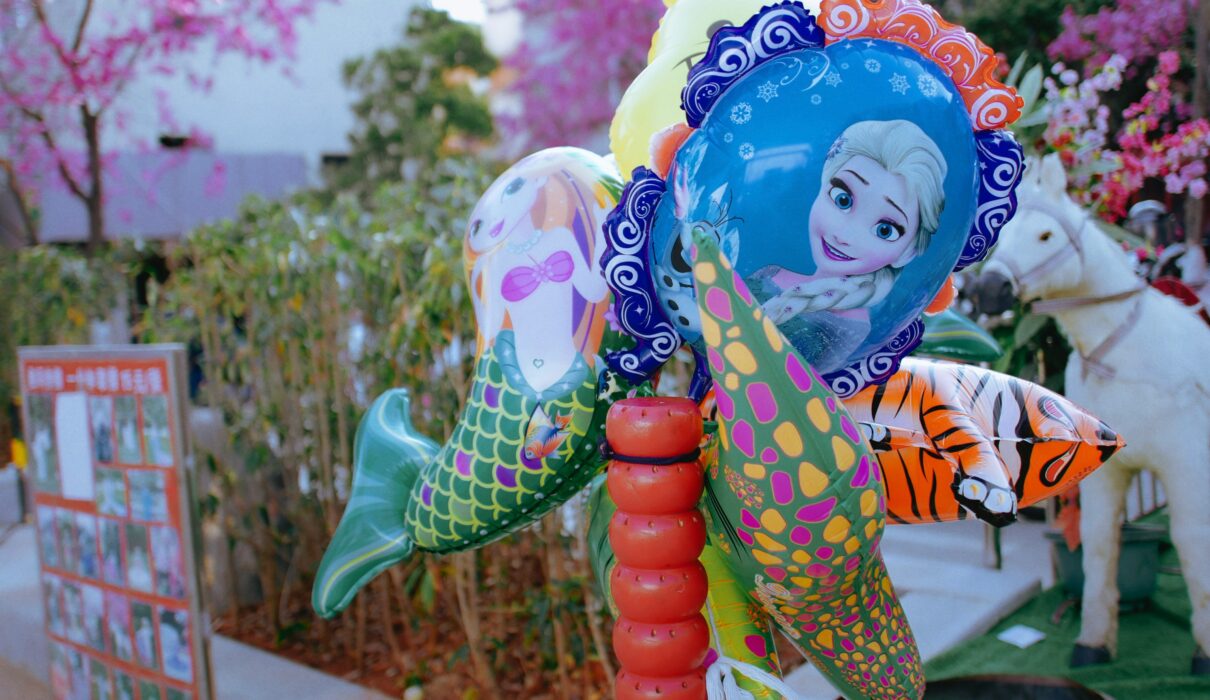Beautiful, kind, innocent and sometimes brave… Let’s learn about the impact of Disney princesses on key points, such as self-esteem, gender stereotypes and body image.
Disney princesses have played a relevant role in the psychosocial development of children for decades and this is undeniable. The reach of this entertainment franchise is enormous and has only grown, making it one of the childhood references for several generations.
A great responsibility rests on the shoulders of the creators of characters and stories, as they have managed to control the discourse on very significant topics: kindness, romantic relationships, physical appearance, and so on. What are the consequences of their influence? Is their discourse beneficial or detrimental to the development of people? Let’s explore this question.
The development of Disney princesses over the years
It’s nothing new that Disney is accused of promoting gender stereotypes and promoting a type of romantic love that does not favor women . Its versions of classic tales, such as The Little Mermaid or Beauty and the Beast , show protagonists who lose the essence of their identity for love or strive to change a man who treats them badly, respectively.
Disney princesses are sweet, nurturing, beautiful, and slim women. Some of them are given a touch of empowerment—Belle with her love of reading, or Jasmine running away from the palace—but this fades away as soon as the crux of the story arrives. The male co-lead is the one who ends up solving the problem and often saves them .
Sometimes when the story is resolved by the princess, it is often through self-sacrifice rather than active struggle, as seen in Tangled ‘s Rapunzel .
The latest generation of princesses seems to have shown a bit more commitment in portraying the roles of their female protagonists, giving more importance to self-love and family.
Although the decisive role of women’s arguments has also been given added importance, as is the case of Mérida ( Brave ) or Anna ( Frozen ). However , the issue of body image is still unresolved, as discussed in this article published in Educational Specialist .
How does exposure to Disney movies affect childhood development?
Studies analyzing the effect of Disney princesses on infant development have focused on three main areas: self-esteem , adoption of gender-stereotypical behaviors, and body image. Let’s look at them in detail.
Self-esteem and Disney princesses
A study published in the journal Child Development revealed very interesting data regarding the influence of the audiovisual consumption of this franchise. Among them is the promotion of self-esteem in male children, much greater than in girls .
This is explained by the identification with male characters, who have strong and decisive characteristics. In addition, the research found an increase in their prosocial behaviors ; an aspect that, they pointed out, deserves further study. In the case of girls, no significant affectation of self-esteem was found during the year that the study lasted.
Gender stereotypes
This is the point most addressed by the studies in question. In the same article cited above, it was found that, one year after girls had been frequently exposed to Disney princess products, they displayed stereotypical gender behaviors , such as avoiding using “male” toys or getting dirty while playing.
Even though the princesses of the second era ( The Little Mermaid , Belle , Aladdin , Pocahontas and Mulan ) already incorporate stereotypically masculine traits , such as conflict resolution or independence, they nevertheless maintain all the typical feminine behaviors. Therefore, the influence diminishes, not disappears.
Body image
Disney princesses conform to stereotypical beauty standards :
- Thinness
- Long eyelashes
- Perfect proportions
Although her character has strayed somewhat from the damsel in distress canon, the same has not been true when it comes to body image.
This lack of body diversity creates an association between good and beauty , as detailed in this study published in the Journal of Applied Social Psychology . The research argues that children exposed to material with a high aesthetic component made more positive evaluations of the behavior of their peers when they found them to be good-looking.
As for the impact on body image, there is contradictory data. Most indicate that there is no negative impact on self-image and body self-esteem, but it is important to note that these data are longitudinal, meaning they do not go beyond one year of collection, so they are not conclusive.
The role of tutors in the analysis of Disney princesses
Here we must start from the point that stereotypical feminine behaviours, such as caring and kindness, are not bad in themselves. However, when it comes to the psychological development of people, analysis and critical thinking cannot be ignored.
It is very difficult (and inadvisable) to prevent children from being exposed to Disney altogether, given the enormous reach of this media platform. However, studies highlight the role of guardians in modulating the influence of gender stereotypes .
The family, as the main agent that promotes development, is a good filter to take advantage of the good and discard the bad in these princesses.
Children will be influenced by Disney princesses. However, it is up to us as a society to teach them to be strong like Mulan, avid readers like Belle, or to embrace the intensity of their emotions like Elsa. In addition, it is important to cement the idea that it is better to be helped by loved ones in whom we trust completely, than to be saved by an idealized prince.


